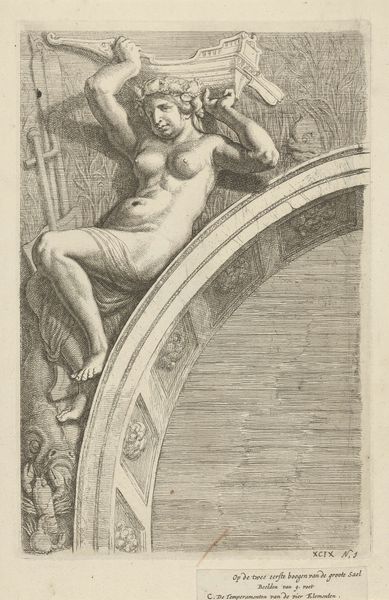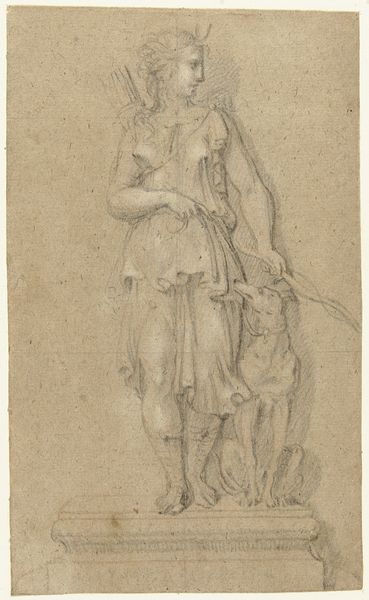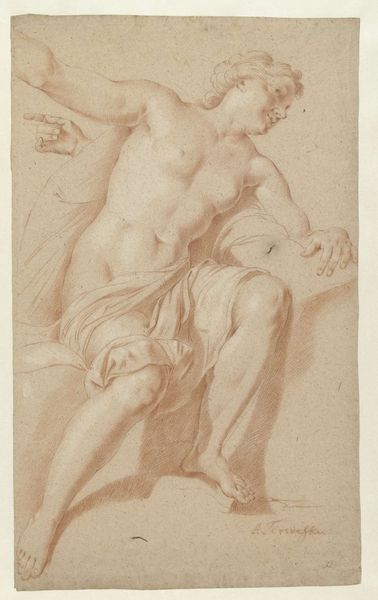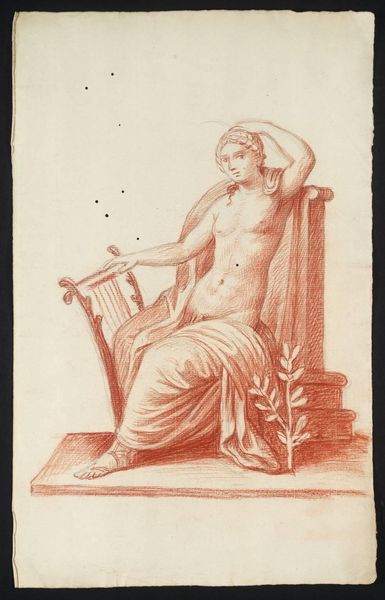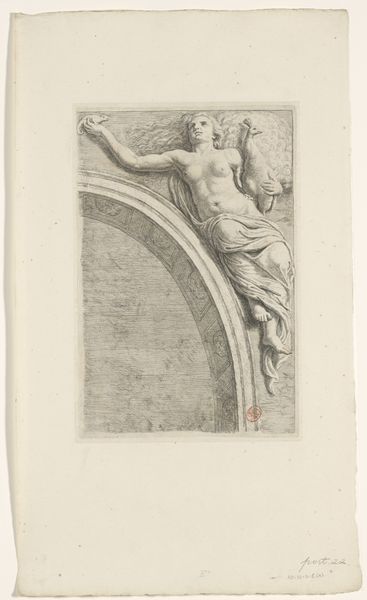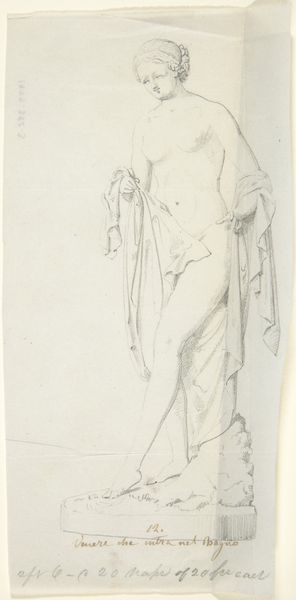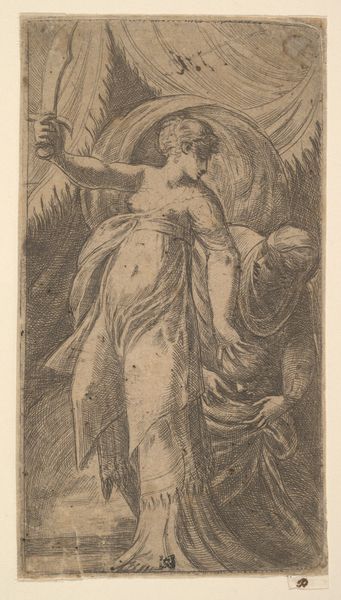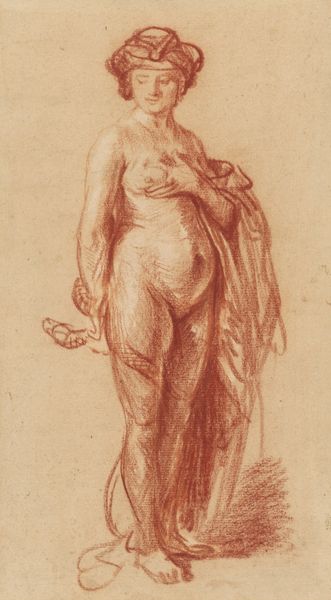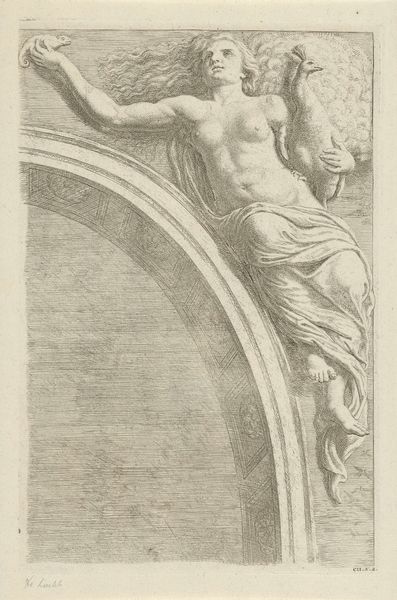
drawing, paper, dry-media
#
drawing
#
baroque
#
paper
#
dry-media
#
genre-painting
#
nude
Dimensions: height 290 mm, width 185 mm
Copyright: Rijks Museum: Open Domain
Editor: So, here we have “Zittende naakte vrouw bij haar toilet” or “Seated Nude Woman at her Toilet” by Jan van Neck. It's a drawing in red chalk on paper, dating from sometime between 1644 and 1714. I’m struck by how intimate it feels, despite being a nude. How do you read the social context of a piece like this? Curator: That's a key question. The ‘intimacy’ you perceive is, in part, carefully constructed. While ostensibly depicting a private moment – a woman at her toilette – we need to consider who this image was actually *for*. Was it meant for private contemplation by the artist? Or intended for a collector’s album, circulating amongst a learned, elite male audience? Editor: I hadn't considered the collector's perspective so deeply. Curator: Exactly. Think about the tradition of the male gaze in art history. Whose desire is being catered to here? How does the depiction of the female nude function within a specific power dynamic? And crucially, how does the artwork fit into larger narratives within the museum that shape a viewer’s reception to the image? The setting, the classical sculptural elements… everything is carefully posed and presented, inviting scrutiny and perhaps even ownership in a way that might have been familiar to its original audiences. Editor: That is so interesting, I now see the staged element much more clearly, and realize how much this reflects specific cultural codes. Curator: Precisely. Reflecting on these questions enables a richer understanding of its place in both art history and society as a whole.
Comments
No comments
Be the first to comment and join the conversation on the ultimate creative platform.
